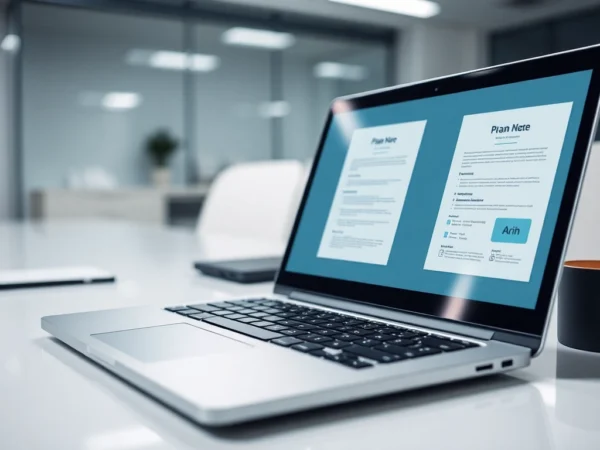Mastering Professional Resume Templates in 2025 to Achieve Your Career Goals
Embracing the Power of Professional Resume Templates in 2025
Why Modern Resume Templates Elevate Your Job Search
In today’s highly competitive job market, crafting a resume that stands out is crucial. With hundreds of applicants vying for the same position, recruiters spend an average of just six seconds reviewing each resume. This fleeting glance underscores the importance of first impressions and the role that professional resume templates play in capturing attention swiftly. Modern templates do more than look appealing; they are meticulously designed to enhance readability, incorporate industry-specific keywords, and optimize ATS (Applicant Tracking System) compatibility. These elements work collectively to ensure your application gets noticed amidst the digital screening processes and emotional assessments of hiring managers.
Investing in a high-quality template can significantly improve your chances of landing interviews and, ultimately, your dream job. Templates streamline content presentation, making your skills, achievements, and experience more compelling and organized. Additionally, they eliminate common mistakes such as overdesign or clutter, which can hinder your application’s success.
Key Features of Effective Resume Templates for Today’s Job Market
An effective professional resume template in 2025 must balance aesthetics with functionality. Key features include:
- ATS Compatibility: Clear formatting, standardized fonts, and keyword-rich sections that easily pass ATS scans.
- Industry-specific Designs: Tailored layouts that emphasize relevant skills and experience for fields like IT, healthcare, finance, or creatives.
- Customization Flexibility: Easy-to-edit sections for adding personal achievements, certifications, or volunteer work without disrupting overall design integrity.
- Mobile Responsiveness: Optimized for viewing on all devices, ensuring recruiters can review your resume anytime, anywhere.
- Visual Hierarchy: Strategic use of headings, bullet points, and spacing to guide recruiters through your story effortlessly.
Furthermore, top templates integrate modern design elements—minimalist color schemes, icons, and infographics—carefully implemented to enhance clarity without overloading the document, thus maintaining professionalism across sectors.
Customization Options for Industry and Experience Levels
Templates do not come in a one-size-fits-all approach. In 2025, customization is vital. For entry-level professionals, templates should highlight education, internships, and soft skills, using concise bullet points and modern fonts. Mid-level candidates can focus on achievements, leadership roles, and technical skills, layered with industry keywords. Senior professionals or those in specialized fields require templates that support extended experience, certifications, and technical competencies, often favoring two-page formats that prioritize clarity and relevance.
Selecting a template aligned with your experience level—whether beginner or executive—maximizes your resume’s potential to attract the right attention. Tailoring sections like professional summary, skills, and accomplishments ensures your resume resonates with hiring managers’ expectations and the ATS algorithms.
Step-by-Step Guide to Building Your Resume Using Templates
1. Gather Your Professional Data and Achievements
Begin by collecting your employment records, educational certificates, skill lists, volunteer activities, and notable accomplishments. Quantify achievements wherever possible—percent increases, revenue generated, projects led—to add credibility and impact.
2. Customize the Template for Maximum Impact
Choose a template that suits your industry and experience level. Replace placeholders with your data, ensuring the inclusion of keywords relevant to your target role. Use action verbs like “orchestrated,” “optimized,” or “accelerated” to describe your contributions vividly.
3. Ensure Consistency and Clarity
Review the layout for consistency in fonts, colors, and spacing. Keep language professional, proofread for grammatical precision, and verify that contact information, social profiles, and portfolio links are up-to-date. Tailor each application by subtly adjusting the content to match job descriptions.
Best Practices to Maximize the Effectiveness of Your Resume Templates
Steer Clear of Overdesigning and Common Pitfalls
While aesthetics matter, overcomplicating your resume with excessive colors, fonts, or decorative elements can detract from your message. Stick to clean, professional designs that emphasize readability. Avoid using images, photos, or overly complex infographics unless industry norms suggest otherwise, such as in creative or graphic design fields.
Incorporate Keywords and Action Verbs Strategically
Leverage industry-specific keywords found in job descriptions to pass ATS scans. Use strong action verbs to describe accomplishments, e.g., “Led a team of 10,” “Successfully negotiated multi-million-dollar deals,” or “Revamped company processes, reducing costs by 25%.” These words make your resume compelling and keyword-rich, enhancing visibility.
Tailor and Refine Your Resume for Each Application
Never rely solely on a static resume. Customize each version to reflect the specific role by emphasizing relevant skills and achievements. Use the ‘Preview, Revise, and Tailor’ mindset—review your resume thoroughly before submitting, and adjust keywords or content based on the role’s requirements.
Measuring Impact and Evolving Your Resume Over Time
Monitor Application Responses and Interview Invitations
Track which resumes garner callbacks and interviews. Use applicant tracking systems’ feedback, or solicit recruiter feedback to identify what works and what needs improvement. Adjust templates to highlight your strengths better or to address common gaps.
Update Your Resume with Growing Experience and Feedback
As your skills and achievements evolve, regularly refresh your resume. Incorporate new certifications, awards, or project successes. If your industry trends shift, adapt your template to stay relevant and attractive to hiring managers.
Leverage Feedback for Personal Branding Refinement
Solicit feedback from mentors, colleagues, or professional resume writers. Use their insights to improve your language, formatting, and overall presentation continuously. Remember, your resume is a reflection of your professional brand—keep it sharp, relevant, and engaging.


